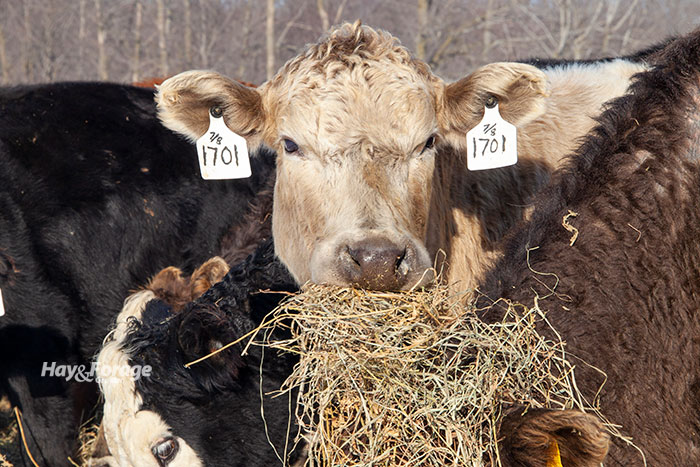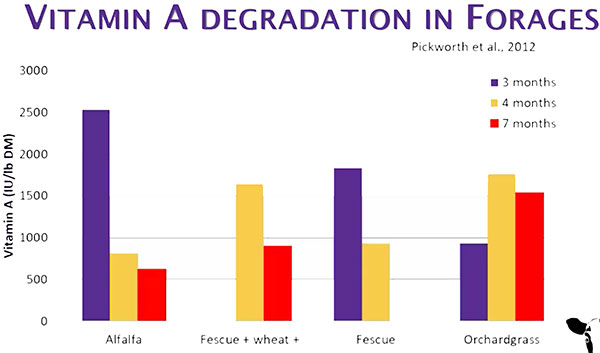
With China being the source of many of our livestock vitamin supplies, the cost of vitamin supplementation has taken a significant turn upward during the past couple of years. This is cause for a more strategic approach to vitamin supplementation, according to Jaymelynn Farney, an extension beef systems specialist with Kansas State University (KSU).
At the same time the cost of vitamin A has risen, Farney said there has been a large rise in the number of vitamin A deficiency cases in cattle identified by the KSU Veterinary Diagnostic Lab.
“Vitamin A is important for overall health and proper growth, but it also helps to minimize scours in calves and reduces the frequency of retained placentas after birthing,” Farney said during her presentation at the American Forage and Grassland Council’s Annual Meeting in Wichita, Kan., last month. “A 1,400-pound cow needs about 38,000 international units (IU) of vitamin A per day.”
Crops such as legumes (alfalfa) and lush, green forage are all good sources of vitamin A, but there is a big caveat. The concentration of vitamin A in stored forage declines rather quickly (see graph).
“Research shows that vitamin A concentrations will decline by 40% to 77% during the first two months of storage, and it continues to degrade over time,” Farney noted. “Some studies have shown slower degradation for hay stored indoors versus left exposed to outdoor weather conditions, but it still drops.”

In addition to stored hay, dormant forages that are in a pasture, range, or hayfield will have low concentrations of vitamin A. The same is true for ensiled or overly mature forages.
Farney explained that vitamin A is stored in an animal’s liver for two to four months, which helps during periods of deficiency. Still, it’s best to ensure that livestock always have access to sufficient vitamin A given the long list of deficiency consequences.
“Even if supplying vitamin A through a mineral mix, keep in mind that it will degrade with exposure to heat, light, moisture, and the presence of certain trace minerals, especially those in inorganic forms,” Farney said. “Stocking up on a cheap mineral mix for a two-year run isn’t necessarily a good thing because your vitamin A will be gone by end of the feeding period.”
Farney recommends buying mineral mixes at six-month intervals and having one formulated for summer grass and another formulated for winter forage feeding. Commenting on injectable vitamin A treatments, the beef specialist said research has shown those treatments are effective for only about one month.
Adequate vitamin A nutrition is especially important for calves. “Transplacental transfer of vitamin A from the cow to the calf is minimal,” Farney noted. “Calf needs are met mostly through the consumption and absorption of colostrum.”
In identifying the key time periods to supplement vitamin A, Farney emphasized to keep vitamin A in the cows’ supplemental feed at least 45 days prior to calving to help prevent calf scours and weak calf syndrome. She also said to maintain vitamin A levels during early lactation.
“If cows are not getting something like new, high-quality alfalfa hay during the summer dormant-grass season, then vitamin A needs to be supplemented,” Farney asserted. “Also, anytime animals are only getting harvested forages, be sure to supplement vitamin A. Stored forages just can’t be counted on to supply adequate amounts of the vitamin,” she concluded.

